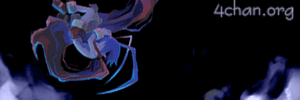| >> |
05/10/12(Thu)20:45 No.19059841
File: 1336697152.png-(22 KB, 500x500, ribbonphou.png)
 Some Bearded Phou could not adapt to the changes within the Ojo plants. As such, they migrated elsewhere in search of places in search of food.
One particular breed of Phou developed after a population of Beareded Phou chanced upon the massive and ambulatory Luscanemat and Cystonemats forests. Dubbed the "Ribbon Phou" due to the red stripe across their bodies, they nest mostly in the underside of the coral forest and nibble at the roots of the plants that grow there. However, these roots lack many essential nutrients that these Phou need. Thus, most of their diet comes from scavenging the miscellaneous bits of animal matter that are left over by the carnivorous plants.
Ribbon Phou create their nests by collecting various bits of dirt and adding on to the dirt clump on the bottom of the Luscanemats. These types of Phou have also developed more sensory filaments, which help them avoid being eaten by Cystonemats as they scavenge dangerously close to the Cystonemats' maws. However, they are weak swimmers, and regularly eaten by predators who can see them rather easily against the green masses of the Luscanemat forest. In addition, the Ribbon Phou's sensory filaments do not always prevent them from being eaten by Cystonemats. Thus, Ribbon Phou multiply at a rapid rate. |

